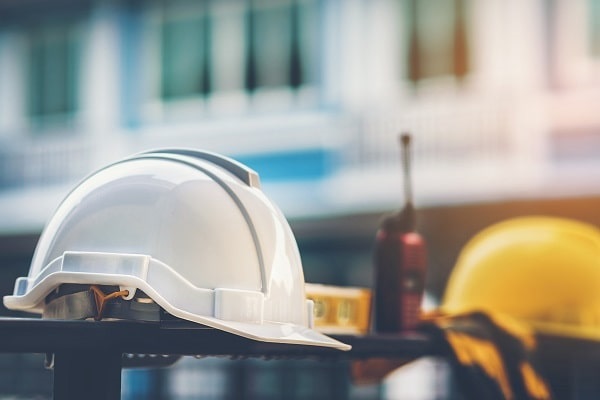Summary: March is Brain Injury Awareness Month, promoting support and advocacy of the brain injury community. Workplace injuries that could cause brain injuries can be prevented by following workplace safety procedures. Find out how employers can help protect their workers from theses injuries by using the correct PPE and safety processes. Every nine seconds, someone in the United States suffers a brain injury. Every March, the
Brain Injury Association of America (BIAA) leads an awareness campaign knowns as Brain Injury Awareness Month to educate the general public about the incidence of brain injury and the needs of people with brain injuries.
Brain Injury Awareness Month is a capaign that raises the understanding of brain injuries and their surviors. The theme for 2022 is
#MoreThanMyBrainInjury, allowing those with brain injuries to share their personal experience and change the narrative of their lives.
Brain Injuries in the Workplace
The U.S. Bureau of Labor and Statistics (BLS) reports that in 2020, there were
68,170 head injuries involving days away from work across all industries.
NIOSH reports that
workers in the construction industry are at a higher risk for both fatal and nonfatal traumatic brain injuries than any other type of industry. These employees face hazards like falling from heights and being struck by objects or vehicles more so than other types of workers. Brain injuries represented a quarter of all reported construction fatalities throughout the eight-year study.

The BIAA reports that
47.9% of all brain injuries are the result of a fall. Slips, trips and falls are also major causes of brain injuries and other types of injuries in the workplace. Any job site can be hazardous when floors or walkways are wet, slippery or have uneven flooring. Other ways employees may suffer a traumatic brain injury include falling from above, such as from a ladder or scaffolding, walking into solid objects such as walls or windows, or an object falling on their head from above, such as a heavy item tumbling off a shelf.
Some of the main signs and symptoms of brain injuries include:
- Headache
- Dizziness
- Blurry vision
- Slurred speech
- Nausea and vomiting
- Ringing of the ears
- Disorientation and confusion
- Listlessness, fatigue or disruption in sleep
- Short-term memory loss, including no recollection of the incident causing the injury
Brain Injury Safety Tips and Prevention
Brain injuries don’t just affect the individual suffering from the injury itself. These injuries also impact loved ones, friends, healthcare providers, insurance companies, employers and more.
While brain injuries are no doubt one of the most severe types of workplace accidents, the good news is that there are prevention methods that can help reduce the frequency and the severity of these injuries.
Help employees avoid slip and fall accidents by keeping work areas as clean and clear of clutter as possible. Properly dispose of trash or scrap materials in the correct containers and clean up any spills immediately.
Keep parking lots free of snow and ice, and throw down salt on
walkways to help improve traction during icy conditions. Place warning signs to identify potentially slippery areas in hallways, entryways and other high-traffic places.
Hard Hat Safety Tips
 According to OSHA
According to OSHA, employers must ensure employees wear proper head protection if:
- They’re susceptible to objects falling from above and striking them in the head
- They could bump into fixed objects like beams or exposed pipes
- Their heads could come into contact with hazards like live electric lines or hot items
Employers should also make sure they’re providing the
right types of protective headgear for the job to eliminate or minimize the risks employees face. Hard hats are divided into three classes that offer different levels of protection:
- Class A: Protect against the impact of falling objects and electric shock from contact with low-voltage current
- Class B: Protect against the impact of falling objects and electric shock from contact with high voltage current
- Class C: Only protect from the impact of falling objects
Hardhats are also described by type. Type 1 hardhats have full brims that encircle the hats, type 2 have short bills on the front, and “bump hats” are also available for employees working in areas with low head clearance. Additionally, head protection should be correctly sized to each individual employee and replaced when it becomes worn or damaged.

Employees should also understand the basics of how to wear and use a hardhat correctly. For instance, always wearing them facing forward (not backwards how one might wear a baseball hat), adjusting the inside harnesses to hold them in place and using the chinstrap when working in awkward positions. Never use hardhats as a bucket to carry items, and clean them according to the manufacturer’s specifications, as certain solvents may weaken the material.
Customized Loss Control Programs from AmTrust Financial
AmTrust’s
Loss Control Department specializes in risk management solutions that improve employee safety. We offer a variety of workplace
safety resources that can help your organization reduce workplace injuries and other incidents. For more information, please
contact us today.
This material is for informational purposes only and is not legal or business advice. Neither AmTrust Financial Services, Inc. nor any of its subsidiaries or affiliates represents or warrants that the information contained herein is appropriate or suitable for any specific business or legal purpose. Readers seeking resolution of specific questions should consult their business and/or legal advisors. Coverages may vary by location. Contact your local RSM for more information.